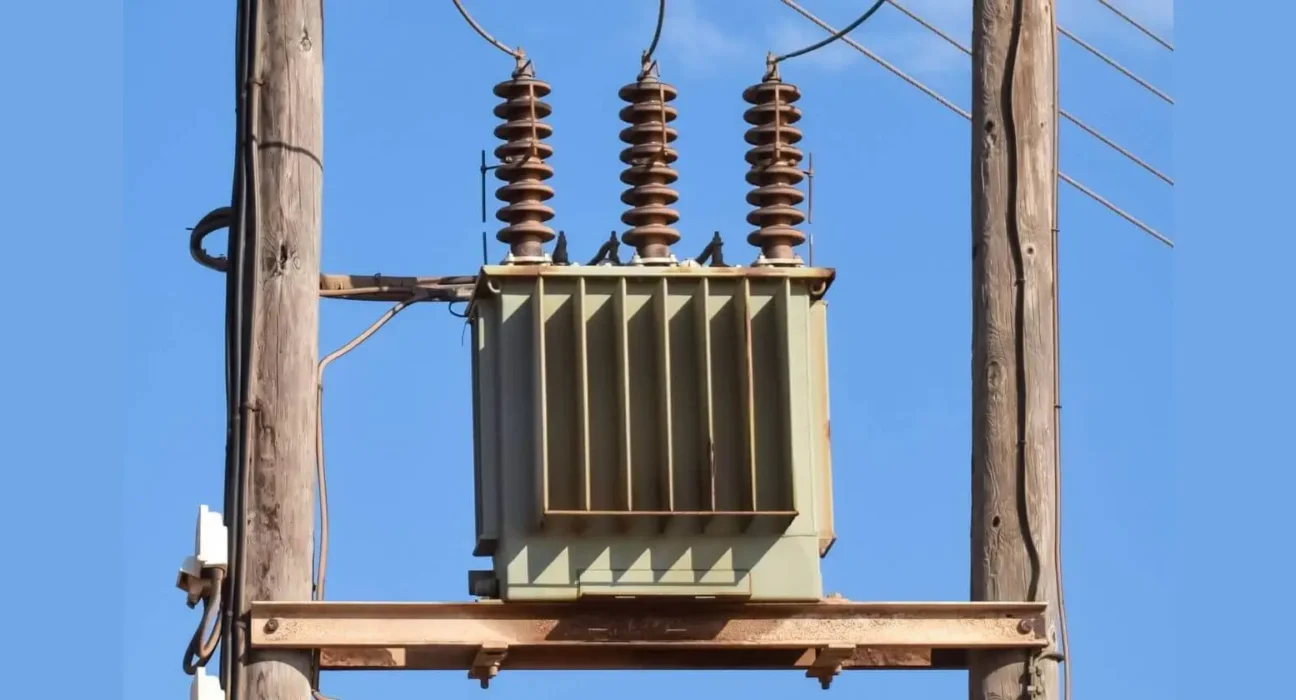What is a Transformer?

A transformer is a stationary electrical device that transfers electrical energy between two or more circuits by means of electromagnetic induction. Simply put, it is an electronic/electrical device that takes electrical power as an input and produces electrical power at the output, but there is no wire connection between them. It is basically used to increase or decrease the voltage of the circuit as per requirement. The transformer works according to Farad’s law. A transformer has no moving device. It is a solid test device.
How does the transformer work?
Transformers work through mutual induction. This method transfers power from primary to secondary.
Normally the voltage supply is to the primary coil of the transformer. After supplying voltage to the primary, the voltage more or less supplies the secondary coil. The voltage coming from the primary to the secondary coil has no electrical connection between the coils. Supplying voltage to the primary coil creates an electromagnetic flux between the two coils and from this magnetic flux, the secondary coil receives the voltage and supplies the output.
Normally the primary coil of the transformer receives voltage and alternating current is always changing in the coil and alternating flux is created in the primary winding. Then the secondary coil which is close to the primary coil collects this flux. This flux is always changing and produces an EMF in the secondary coil which is organized according to Farad’s law of electromagnetic induction. If the secondary circuit is closed then the current will flow.
Structure of Transformer
A transformer is basically made up of three parts.
- Primary Coil – Primary winding is the main winding which is subjected to alternating current. In the case of a step-up or step-down transformer, the winding structure is slightly different
- Secondary coil – In the case of a secondary coil, the structure of winding will also be slightly different in the case of a step-up or step-down transformer.
- Magnetic core – Magnetic flux is used to flow from the primary winding to the secondary winding. The magnetic core is made of cold rolled grain-oriented silicon steel.
Types of Transformers
There are three types of transformers according to voltage:
- Step-Up Transformer – A type of transformer in which the secondary coil has a higher voltage than the primary coil is a step-up transformer.
- Step-Down Transformer – A type of transformer in which the secondary coil has a lower voltage than the primary coil is a step-down transformer.
- Isolation Transformer – An isolation transformer is a type of transformer used to transfer electrical power from a source of alternating current (AC) power to a device or circuit while isolating the powered device from the power source. This isolation is achieved through the magnetic coupling between the transformer’s primary and secondary windings, without any direct electrical connection between them.
Three types of transformers according to the core medium are:
- Air Core transformer
- Iron Core Transformer
- Core Transformer in Ferries
Transformers are of two types according to use:
- Power Transformer
- Distribution Transformers
Transformers are of two types according to the electrical supply:
- Single Phase Transformer
- Three Phase Transformer
According to the type of use, there are two types of transformers:
- Indoor Transformer
- Outdoor Transformer
What is the unit of capacity of the transformer?
The unit of transformer capacity is KVA (KVA). ie kilowatt volt ampere. The reason is, that we know that the unit of power of any machine is determined based on its losses. Same thing here. The transformer losses are.
- Iron loss/core loss
- Copper loss
Now iron loss means voltage, and copper loss means current loss. Then the volt-ampere stands on the total. For this reason, the unit of transformer capacity is written as kilowatt volt-ampere or kVA (kVA).
Final Thoughts
Transformers are fundamental components in modern electrical systems, enabling efficient power transmission, voltage regulation, and electrical isolation. Understanding their components, functionality, and applications highlights their importance in maintaining a reliable and safe electrical infrastructure. As technology advances, transformers will continue to evolve, contributing to more efficient and sustainable power systems. Whether it’s in power generation, industrial applications, or renewable energy, transformers play a pivotal role in meeting the world’s growing energy demands.










